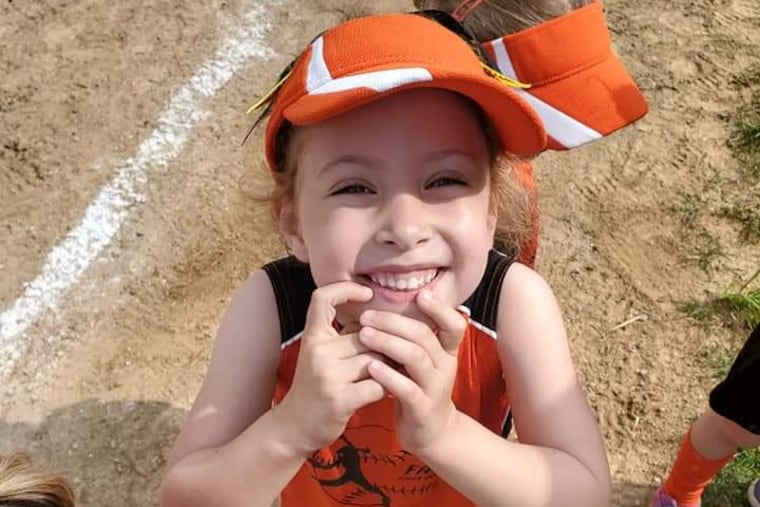Children’s Hospital of Philadelphia finds benefits of fetal surgery for spina bifida continue years later
In a follow-up study, CHOP researchers found prenatal spina bifida surgery had positive results 10 years later.

Seven years ago, when she was about 20 weeks pregnant, Jackie Oberio got news no mother-to-be wants to receive: her unborn daughter had spina bifida, a spinal cord birth defect that can cause partial paralysis.
Mild forms of spina bifida lead to few or minor complications. But Oberio’s unborn child was diagnosed with the most serious form of spina bifida, myelomeningocele, which meant she might be unable to walk on her own and have limited bowel and bladder control.
Oberio and her husband, Gideon, who live in Maryland, sought out second opinions from multiple specialists, none of whom were at all encouraging.
Eventually, a doctor referred the young couple to Children’s Hospital of Philadelphia, where doctors were performing prenatal spina bifida surgery with promising results.
“Hope is the word that always comes to mind," Oberio recalled. "It was a time we really felt hopeless, the way the previous doctors had described what was going on. CHOP didn’t make it seem like it was going to be easy, but they made it sound like things could be OK and that she could be happy.”
There is no cure for spina bifida and even children who receive corrective surgery before birth will need lifelong treatment. But a paper published in 2011 showed that children who received prenatal surgery to correct myelomeningocele had better outcomes than children who had surgery after birth. In a follow-up paper, published Friday in the journal Pediatrics, researchers found the physical and emotional benefits of prenatal surgery have continued as the children have grown up.
» READ MORE: Spina bifida study offers new hope for fetal surgery
“It is extremely gratifying to see that the positive results from the initial MOMS trial endure into childhood,” said N. Scott Adzick, surgeon-in-chief at CHOP and director of the hospital’s Center for Fetal Diagnosis and Treatment.
Spina bifida, which affects one in 1,500 births in the United States, occurs when the neural tube fails to close, exposing the spinal cord and nerves. The neural tube — which develops into the spinal cord, spine, brain, and skull — is formed within the first few weeks of pregnancy. CHOP researchers found that the condition grows worse later in pregnancy, when the opening exposes the developing spinal cord to amniotic fluid, which further affects development.
By surgically closing the neural tube in the womb, doctors can limit the opportunities for additional damage, said Adzick, who is a co-author of the newly published study.
In their initial study, researchers found children who had prenatal surgery were better able to walk 2½ years after the surgery and had better motor function than children who had corrective surgery after birth. The study ended in 2010, after 183 surgeries.
Researchers checked in with 161 of those children for the follow-up study, which was conducted between 2011 and 2017. By then, the children were between ages 6 and 10.
As school-age children, researchers found those who had prenatal surgery were more likely to be walking independently, had better motor and cognitive skills, better bladder control, and were less likely to need a shunt, used to treat brain swelling common among children with neural tube defects.
Vanderbilt University and the University of California, San Francisco, also participated in the study.
CHOP began performing prenatal spina bifida surgery in 1998. But when Oberio learned of her daughter’s diagnosis in 2013, the operation was a new and wild concept to her.
“It was scary,” she said. “But I just felt she was always going to be this fighter. ... She felt like a horse galloping every time they hooked me up to the monitors.”
Now 6 years old, Audrey is still taking life at a gallop. She takes jazz and tap-dancing classes, rides horses, and plays softball.
At the beginning of every school year she and her mom make a presentation to the class about spina bifida, answering questions and letting other kids pass around a spare pair of the leg braces she wears. She proudly shows off the train-track scar at the base of her spine.
“I know everyone thinks their kids are amazing, but Audrey is. She’s a light,” Oberio said.